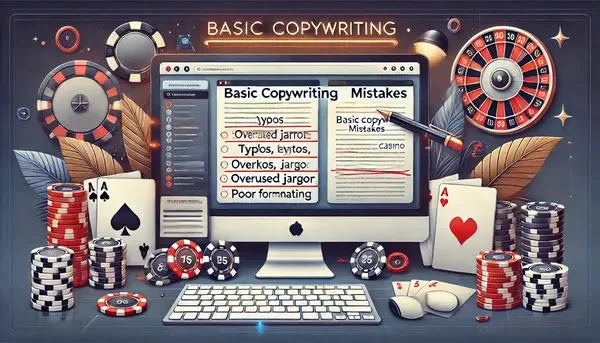
Emotional Analytics in Copywriting: How to Measure Reader Reactions
Emotional analytics in copywriting is transforming how writers understand and connect with audiences. In a digital world driven by user behaviour and engagement metrics, the ability to evaluate emotional responses has become essential. This analytical approach helps brands craft messages that not only capture attention but also provoke authentic emotional reactions, ultimately influencing decision-making and brand loyalty. Understanding how emotions affect content perception is key to writing persuasive, trustworthy, and human-focused copy.
The Role of Emotions in Copywriting
Every piece of text evokes a psychological response, whether it’s excitement, curiosity, or empathy. Modern copywriters rely on emotional triggers to guide readers through a journey that reflects their needs and aspirations. By identifying which emotions drive engagement—such as joy in lifestyle content or trust in financial communication—writers can structure their narratives to generate stronger resonance.
Emotional copywriting is not about manipulation; it’s about relevance and authenticity. Consumers today are more aware of marketing techniques and expect transparency from brands. Thus, emotional analytics allows writers to ensure their tone, message, and storytelling approach align with readers’ expectations and context.
Furthermore, understanding the emotional tone behind words helps refine the brand’s identity. Whether a campaign aims to inspire confidence, promote comfort, or drive action, the emotions conveyed must remain consistent with the brand’s values and voice.
Tools and Techniques for Measuring Emotional Impact
Emotional analytics involves both qualitative and quantitative evaluation. Tools such as sentiment analysis software and natural language processing (NLP) identify emotional polarity in text—positive, neutral, or negative. Meanwhile, biometric tools like eye-tracking, facial recognition, and galvanic skin response provide deeper insights into subconscious reactions to specific phrases or visuals.
In practical terms, writers can use platforms like Grammarly Insights, IBM Watson Tone Analyzer, or Affectiva to assess the emotional load of their copy. These tools highlight emotional cues that may strengthen or weaken audience connection, allowing writers to adjust their style accordingly.
However, data alone cannot replace human intuition. Emotional analytics should guide creative direction rather than dictate it. The writer’s understanding of context, audience, and culture remains irreplaceable when crafting emotionally intelligent copy.
Analysing Reader Behaviour through Emotional Data
Behavioural metrics complement emotional analytics by showing how readers react after exposure to content. High click-through rates, longer session durations, and social sharing patterns often indicate positive emotional engagement. On the other hand, bounce rates or low time-on-page may suggest that the content failed to resonate emotionally.
Advanced analytics platforms now integrate behavioural and emotional data, providing comprehensive insight into user experience. For example, combining heatmaps with sentiment tracking allows writers to see not only what readers look at but also how they feel while interacting with content.
By interpreting this data, brands can identify emotional pain points in the customer journey. This understanding supports more personalised content strategies, ensuring that each communication piece meets users’ emotional expectations at every stage.
Ethics and Transparency in Emotional Analytics
While measuring emotions offers valuable insight, it also raises ethical questions. Users should always be aware when their emotional data is being analysed, especially when biometric tools are involved. Responsible content creators prioritise transparency and respect for user privacy, ensuring data collection aligns with GDPR and ethical marketing standards.
Writers must avoid exploiting emotional vulnerabilities. The goal is to understand, not manipulate, the reader’s psychological state. Ethical emotional analytics empowers brands to build trust rather than dependence, creating communication rooted in empathy.
As technology advances, ethical guidelines for emotional analytics will continue to evolve. Professional copywriters should stay informed about these developments to maintain credibility and uphold audience respect.

Integrating Emotional Insights into Copywriting Strategy
Applying emotional data effectively requires more than simply recognising readers’ feelings—it demands a strategic response. For instance, identifying that an audience reacts positively to empathetic narratives enables brands to weave compassion into product descriptions or customer communications.
Emotional insights also inform A/B testing. Writers can test two emotionally distinct versions of a text—one focused on excitement, another on security—and determine which resonates better with the audience. This process leads to continuous optimisation of tone and structure.
Ultimately, emotional analytics helps align creative goals with measurable outcomes. By merging psychology, linguistics, and data science, copywriters can produce content that not only informs but also connects meaningfully with the reader’s inner world.
Future Trends in Emotional Analytics for Copywriters
In 2025, emotional analytics is expected to integrate more deeply with artificial intelligence, enabling predictive modelling of reader emotions before publication. Machine learning will refine emotional mapping, anticipating which phrases, colours, or structures trigger specific reactions across demographics.
Moreover, with voice and video content expanding, emotional analytics will evolve beyond text. Analysing tone, pitch, and facial expression in multimedia copy will provide new opportunities for crafting immersive emotional experiences.
The future of emotional analytics lies in synergy: the combination of technology’s precision with the copywriter’s empathy. Together, they form the foundation of next-generation communication that respects human emotion while leveraging data-driven accuracy.



